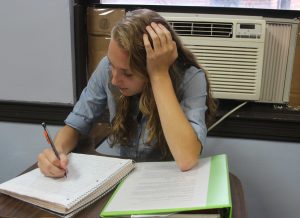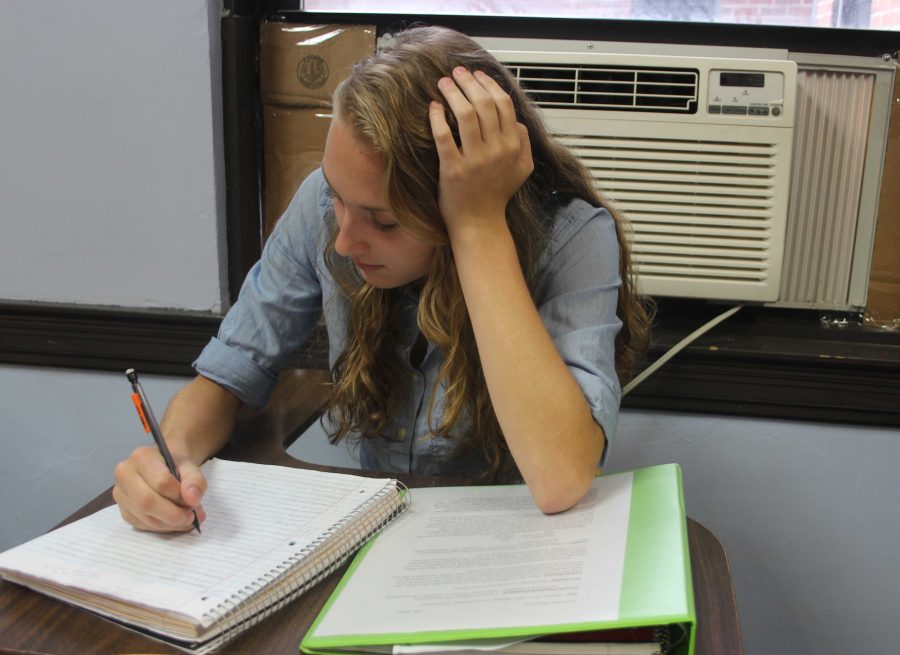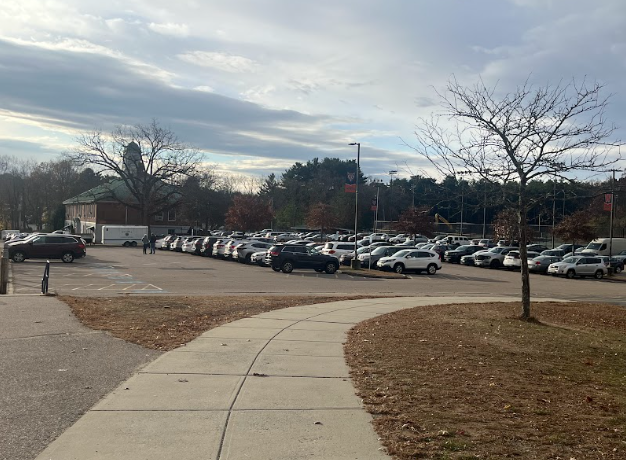
By Emily Martin and Daanya Salmanullah
Class of 2016
Record breaking temperatures scorched the East Coast this past month with the first September heat wave in since 1983 and the hottest day of the year falling on September 8. The hot spell brought about significant problems for kids all over New England going back to school. Although administration attempted to handle the situation, they could have handled it better.
Students at Walpole High School had to experience the intense heat in the school due to the school’s lack of air conditioning and the lack of efforts to shut off lights around the school which could offer at least a little more solace from the heat. As a result, the students were unable to focus during their classes or learn to the best of their abilities. Other un-air conditioned schools in the Greater Boston area, including Framingham and Lawrence, however, let their students out early to avoid the hottest part of the day, as they recognized that forcing kids to learn in the sweltering temperatures can also be a health hazard.
Even here in Walpole, a student fainted in the middle of a class due to dehydration, despite the fact that she was not even in the hottest wing of the school.
Though administration offered popsicles to help some students cope with the heat, they still did not address the issues of heat in the classroom— where a student’s comfort is vital to their learning abilities.
Seeing as only eight spaces in the school currently have window air conditioners (including the teachers’ room in the English wing, the transition room, the guidance area, three classrooms and even central air for the main lobby area), the school has consequently limited the current number of air conditioned areas to specific parts of the school that are not commonly used by a great number of students during the day. With three classrooms having air-conditioning, that leaves over fifty classroom spaces without air-conditioning.
Instead, administration should look to either invest in more air conditioners, or move the current air conditioners to areas of the school that are more widely used during the day. If this can not be achieved, teachers must consider releasing students early to avoid the heat all together or shutting off lights to help decrease the temperature in the school.
Carl Baum, a professor of pediatrics at the Yale School of Medicine, has recently released a study regarding the dangers of heat and humidity. “With very high humidity, you’re ability to cool yourself diminishes,” said Baum. For young children, Baum says that the heat can be very dangerous, as elementary school students do not understand the importance of staying in the shade and staying hydrated. He recommends that schools release children early to avoid the peak heat. Administrators always say they care about the welfare of their students — so why don’t they do what’s best for their students’ health?
With the weather in September being much hotter than predicted, it is understandable that schools throughout New England were not prepared to handle the hot conditions. The administration did attempt to do something by providing popsicles and checking temperatures around the school. However, they should know how to adjust accordingly in the future, whether that involves sending students home early or installing air conditioning systems throughout the building, in order to ensure the students’ well being and happiness.














